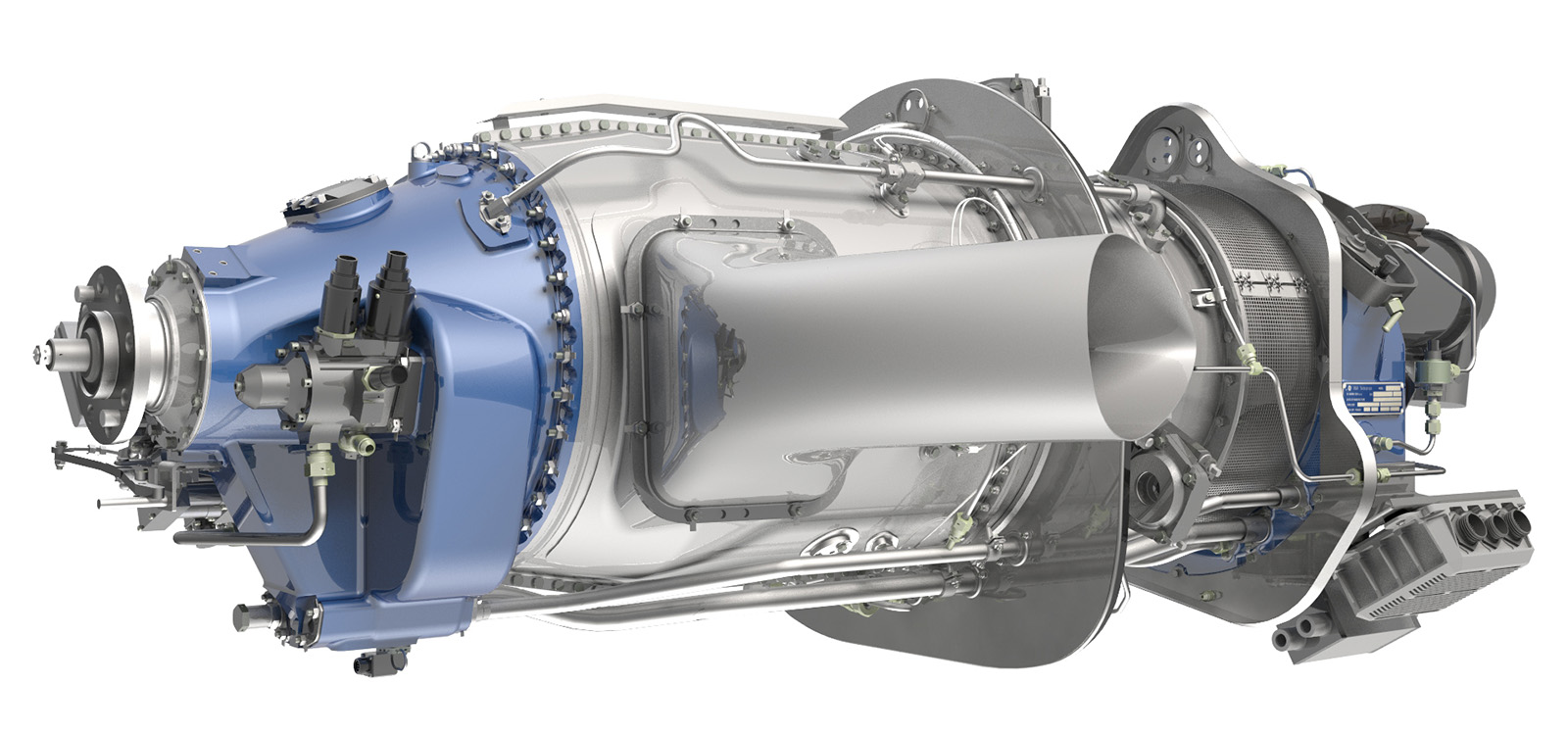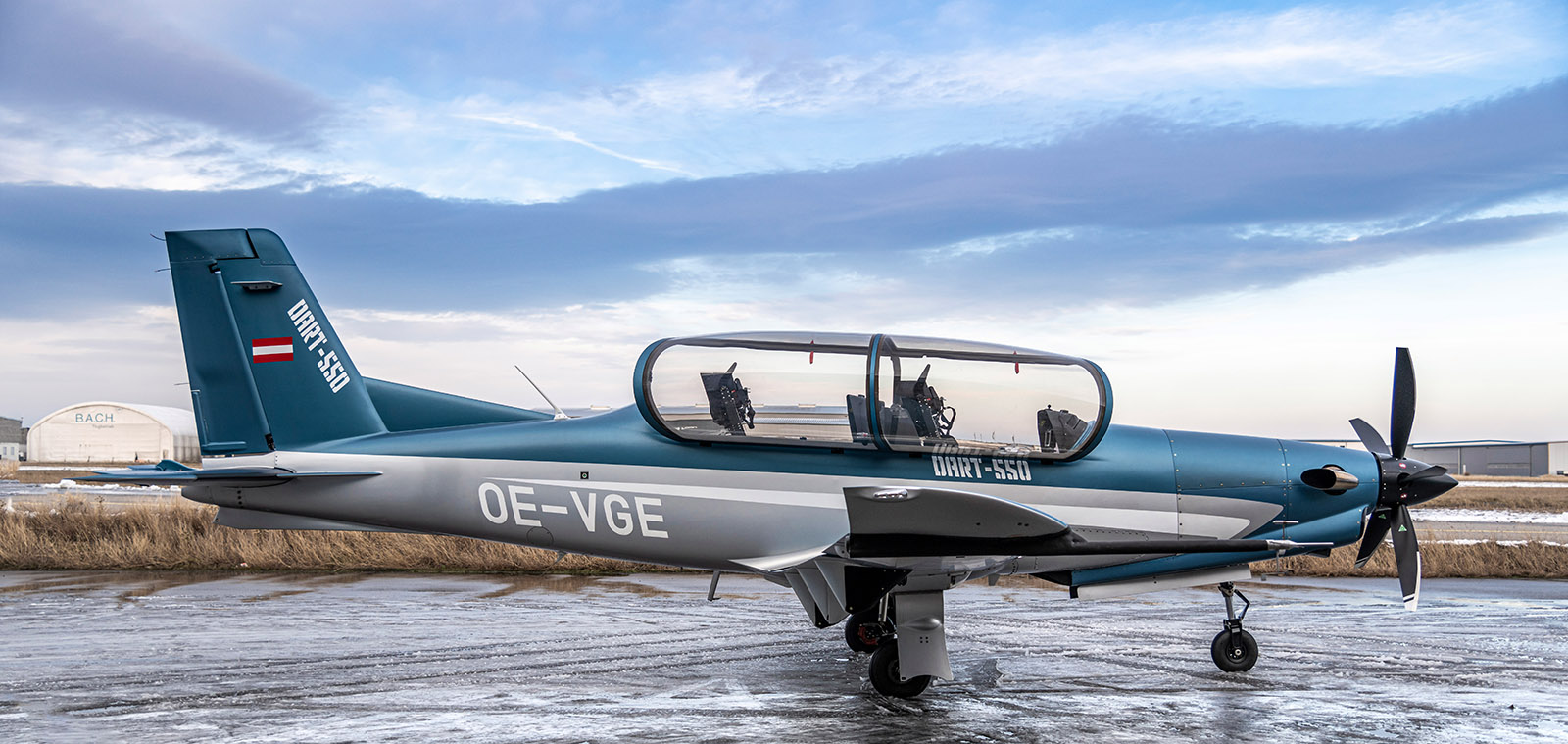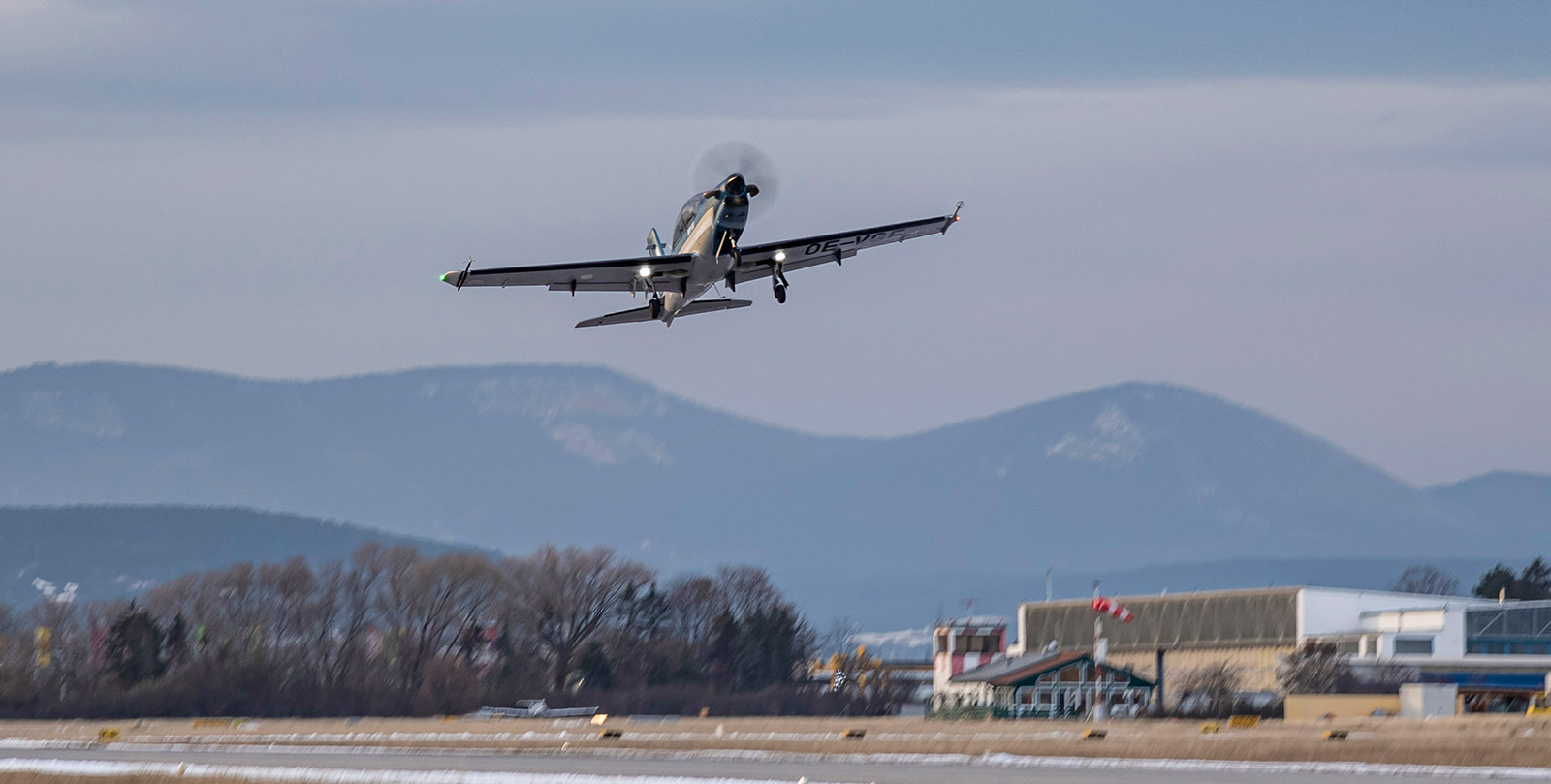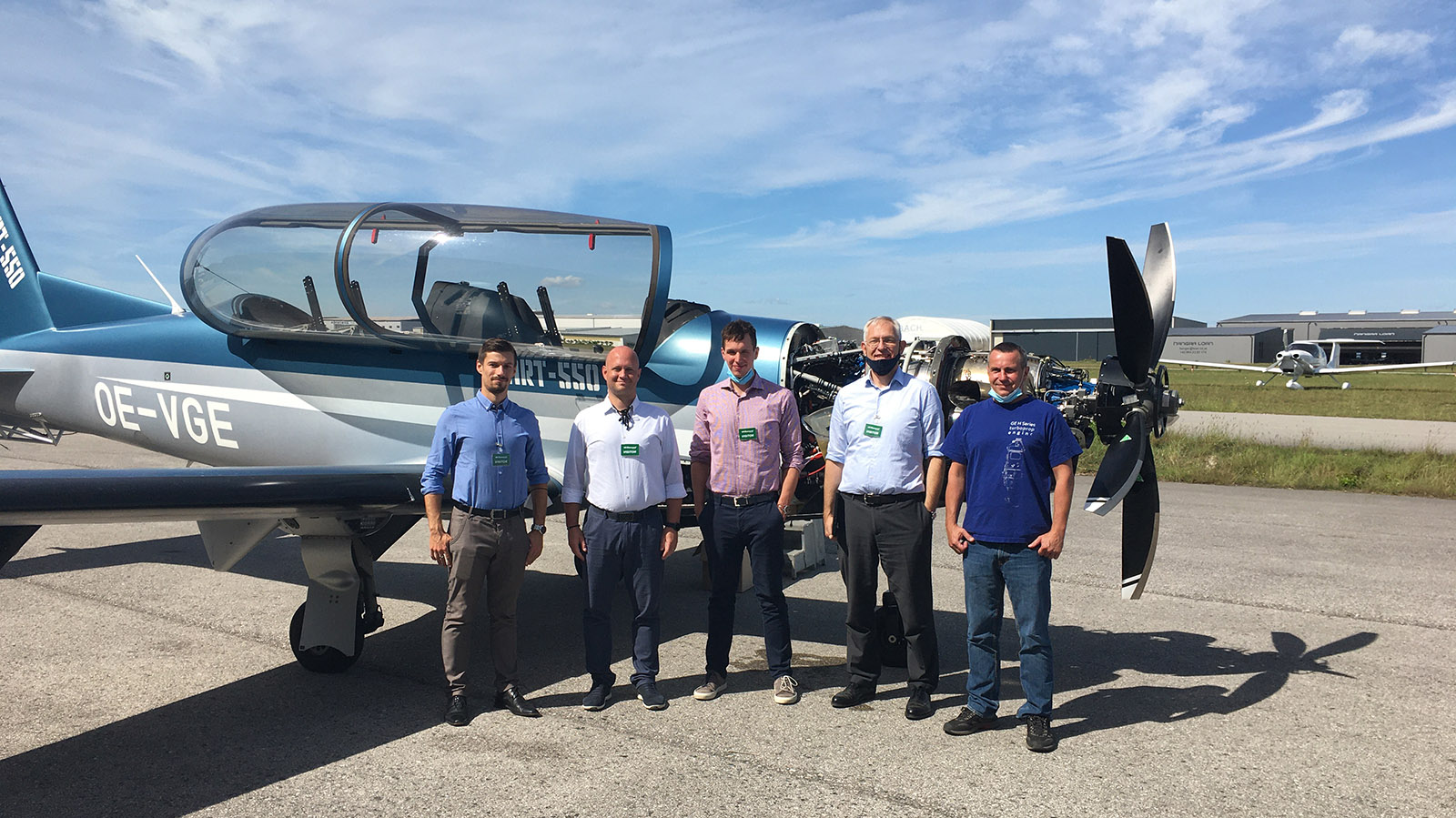Aviation
Flying Upside Down
The new aerobatic H Series engine with electronic engine and propeller controls, debuts at first flight test on board the Diamond Aircraft DART-550, the new single propeller aircraft which it was selected for.
Dec 2020
Aerobatic flight is almost certainly the most fascinating and breathtaking spectacle one can enjoy in aviation. What lies behind, and at the heart of, this show in technological and operational terms is equally intriguing and is one of the specialties of GE Aviation Turboprop aerobatic engine teams.
True to the company's historical-industrial roots, the first version of the aerobatic engine developed in Prague dates back to the 1990s and is a derivative of the famous M601 used in training for pilots by the Polish air force: it was the M601T civil certified, mounted on board the PZL Orlik trainer aircraft.
While aerobatic flight was primarily a military prerogative in those days, today its use has intensified (e.g. in reconnaissance flights) and trends have changed, with many more civilian operators using such aircraft for training pilots on behalf of area forces, or as private flight schools. Safety and reliability gain the utmost importance.
That's how the Czech team has also worked over the years to develop the new H Series version, specifically dedicated to these air operators. “Today’s market demands greater operational efficiency, lower fuel consumption and emissions, and in particular a new generation of aerobatic aircraft, with weight optimized by cutting-edge materials and high-performance onboard electronics," said Michal Ptacnik, PhD. Senior Director, Business Development and Sales, GE Aviation Czech.
The development work for the new generation of acrobatic turboprops, radically different from the version offered by the reference market, began at the end of 2016: hence, four years later, the new H75-A has been delivered to Diamond Aircraft Industries and performed its first flight on board the full composite Diamond DART-550, the aerobatic turboprop trainer aircraft in tandem seat configuration for which it was developed.
“This is a very important milestone, for the teams of the different departments involved in the Czech Republic as well as for all the Italian and American colleagues who have collaborated in the project,” continued Ptacnik, who has over 35 years of engineering and management experience in this field and who also worked on that M601T version.
“And it is the first time that an aerobatic turboprop engine in this power class makes its debut with electronic controls such as the EECU (Engine Electronic Control Unit): this allows civil as well as military pilots to fly a turboprop aircraft using a single engine and propeller control lever during their training, thus exactly feeling like piloting a jet and replicating the real practical experience they’ll face in real missions” said Ptacnik. Pilots are then able to focus more on what’s happening outside the cockpit versus on what’s happening inside: this does not only increase the flight safety but even make the flight experience more enjoyable.
Equal satisfaction can be heard from Robert John, Program Manager DART Series at Diamond Aircraft Austria who is reportedly very happy with the GE Aviation collaboration: “for such a state-of-the-art turboprop tandem trainer aircraft you need an equally modern engine platform” he said. “The H75 is a very reliable, robust and proven engine that has been further optimized in terms of efficiency and maintenance. Together with the Electronic Engine and Propeller Control (EEPC), the new GE H75-A makes it a perfect match with our sophisticated DART-550 aircraft – ideal for a modern training environment.”
"I’ve experienced flight testing with both the standard H75 engine and during the recent maiden flight with the new aerobatic version: despite the harsh weather conditions, the H75-A engine behaves as expected and without any stress at all"
The H Series engines are by nature highly efficient and created to withstand the most drastic and challenging natural flight conditions which is why their aerobatic version has been enhanced in this respect. Not only with integrated propeller and engine control, but also a readjustment of the fluid dynamics to allow those in-flight maneuvers that defy the laws of gravity: situations where even upside down, swooping or flying sideways, the oil or fuel systems in the engine must continue to operate as if they were in a normal position.
“I’ve experienced flight testing with both the standard H75 engine and during the recent maiden flight with the new aerobatic version: despite the harsh weather conditions and the very first time in-flight, the H75-A engine behaves as expected and without any stress at all… this is very important since our goal is right to expand the aerobatic performance of DART-550” said the Diamond Chief Test Pilot, Sören Pedersen.
“We have redesigned the oil system and at the same time worked on structural components as well as controls to ensure optimal engine support even in situations with negative gravity acceleration," explained Jan Nedvidek, Senior Program Manager at GE Aviation Turboprop. "That is, in all those maneuvers where the aircraft simulates free fall in the air or faces conflicting physical forces, as in vertical flight: situations where a traditional oil system struggles to pump to lubricate engine components. In addition to ensuring stable flows, the individual engine parts have also been enhanced to withstand maneuvers at very high speeds.”
From now on, with the new H75-A, the DART-550 will perform various aerobatic flights after the engine tests yet accomplished in Prague, as Nedvidek explains. "The engine has been thoroughly tested at GEAC in our propeller and dyno test cell, and the inverted flight capabilities were tested using the dynamic inverted testing bench at our partner VZLU, the Czech Aerospace Research Center. However, the ultimate testing will continue through 2021 using the real aircraft in the air.”
The next goal will be to push further the limits of what is possible during the aerobatic tests that will lead to EASA and FAA certification of the engine in the near future. Meanwhile, it is going to be stunning to watch the intrepid pilots who will test the H75-A on board the new DART-550 performing spins, breathtaking maneuvers and staying upside down in the air for up to 60 seconds!
Every aircraft photo in page is courtesy of Diamond Aircraft Industries ©









